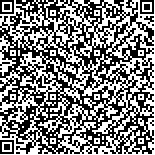|
|
|
| |
|
|
| 本文已被:浏览 3270次 下载 3039次 |

码上扫一扫! |
|
|
| 海水养殖鱼类鳗弧菌(Vibrio anguillarum)临床分离株的血清型和抗生素耐药谱 |
|
赵鲁宁1,2,3, 李贵阳2,3, 李杰2,3, 李晨2,3, 张乐萃1, 莫照兰2,3
|
|
1.青岛农业大学动物科技学院 青岛 266109;2.农业部海洋渔业可持续发展重点实验室 青岛 266071;3.中国水产科学研究院黄海水产研究所 青岛 266071
|
|
| 摘要: |
| 鳗弧菌(Vibrio anguillarum)是常见的海水鱼类病原菌,有23种血清型,其中O1-O3为主要的致病血清型。我国海水养殖鱼类鳗弧菌的血清型种类尚未明确。本研究对实验室分离和收集自海水养殖鱼类的31株鳗弧菌临床菌株进行了生理生化、16S rRNA基因序列、血清分型、抗生素敏感性的分析,旨在系统了解存在于我国海水养殖环境的鳗弧菌血清学型及耐药特征。首先用API ID 32E生化反应鉴定系统对鳗弧菌进行生理生化鉴定,结果未能将待测菌株鉴定到种的水平;然后测定鳗弧菌的16S rRNA基因序列并构建系统发育树,结果显示所有分离株聚为一簇,与鳗弧菌有最近的亲缘关系(相似性99%-100%),据此可将临床菌株鉴定为鳗弧菌。以鳗弧菌O1-O5血清型标准菌株为O抗原制备兔抗血清,采用玻片凝集反应对鳗弧菌菌株进行血清学分析,结果显示属于O1、O2、O3、O5血清型菌株分别有16、5、3、1株,表明我国海水鱼类养殖存在3种血清型的致病性鳗弧菌, O1为主要流行的血清型。用ATB药敏检测系统检测鳗弧菌对28种抗生素的敏感性,结果显示菌株对7种抗生素(林可霉素、夫西地酸、甲硝唑、阿莫西林、阿莫西林/克拉维酸、苯唑西林、青霉素)的耐药率为100%,对3种抗生素(红霉素、原始霉素、泰洛星)的耐药率为94.4%(34株),有83%以上的菌株(30株)对12种以上的抗生素产生耐药,表明我国海水鱼类养殖鳗弧菌普遍存在多重耐药性。研究结果为进一步揭示鳗弧菌的流行病学规律和防控弧菌病奠定了良好的基础。 |
| 关键词: 鳗弧菌 生理生化反应 16S rRNA基因 血清学鉴定 抗生素敏感性 |
| DOI:10.11693/hyhz20140500148 |
| 分类号: |
| 基金项目:中国水产科学研究院黄海水产研究所所级基本科研业务费项目,2014A06XK02号;国家自然科学基金项目,31372567号,31402342号;山东泰山学者计划项目资助。 |
|
| SEROTYPING AND ANTIBIOTICS SENSITIVITY OF VIBRIO ANGUILLARUM STRAINS ISOLATED FROM MARINE FARMED FISH |
|
ZHAO Lu-Ning1,2,3, LI Gui-Yang2,3, LI Jie2,3, LI Chen2,3, ZHANG Le-Cui1, MO Zhao-Lan2,3
|
|
1.College of Animal Science and Technology, Qingdao Agricultural University, Qingdao 266109, China;2.Key Laboratory of Sustainable Development of Marine Fisheries, Ministry of Agriculture, Qingdao 266071, China;3.Yellow Sea Fisheries Research Institute, Chinese Academy of Fishery Sciences, Qingdao 266071, China
|
| Abstract: |
| Vibrio anguillarum is a bacterial pathogen commonly found in fish mariculture. There are 23 serotypes assigned for V. anguillarum, and O1, O2, and O3 serotype are associated with fish vibriosis. At present, few is known about the serotype and antibiotics resistance of V. anguillarum from mariculture fish in China. The present studies were carried out to reveal the serotype and antibiotics resistance of 31 clinical V. anguillarum strains isolated from fish farm. API ID 32E identification system was used to analyze the physiological and biochemical characteristics of the tested strains. The results showed the strains had the constant and variable physiological and biochemical characteristics, and thus was difficult to identify these strains to species level based on the physiological and biochemical characteristics. Nevertheless, the 16S rRNA gene sequences of the isolates revealed the highest identities(99%-100%) with V. anguillarum strains deposited in the GenBank, and phylogenetic tree analysis based on 16S rRNA gene sequences showed that all isolates concentrated in a cluster with known V. anguillarum strains. Therefore, all clinical isolates could be identified as V. anguillarum. Moreover, serotypes of the V. anguillarum isolates were determined by glass agglutination reaction test using rabbit anti-serum against O1-O5 serotype V. anguillarum. The results displayed that the isolates belonged to O1, O2, O3, and O5 in number of 16, 5, 3, and 1, respectively, presenting three potential pathogenic serotypes(O1-O3) of V. anguillarum strains, of which O1 was prevalent. Furthermore, the antibiotics sensitivity of V. anguillarum against 28 antibiotics were detected with ATB system. The results show that the resistance of the isolates reached 100% against seven antibiotics(lincomycin, fusidine, metronidazole, amoxicillin, amoxicillin/clavulanic acid, oxacillin, penicillin) and 94.4%(34 strains) against three antibiotics(erythromycin, pristinamycin, tylosin). Over 83%(30 strains) were resistant against 12 antibiotics. Therefore, most V. anguillarum isolates were multi-antibiotics-resistant strains. The findings here may help scientists to investigate the epidemiology of V. anguillarum and to control fish vibriosis. |
| Key words: Vibrio anguillarum physiological and biochemical identification 16S rRNA gene serotyping antibiotics sensitivity |
|
|
|
|
|
|
